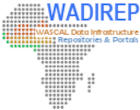Occupying a total area of 11,300 sq km, with a population density of 130 persons per sq km, The Republic of the Gambia is one of the most densely populated countries on continental Africa. Because The Gambia possesses only minimal commercial mineral resources and manufacturing sector, agriculture is the primary source of livelihood for many Gambians, employing more than 68% of the workforce and accounting for about 40% of the Gambia’s export earnings contributing about 26% of the Gross Domestic Product (GDP). Agriculture is predominantly subsistence and rain-fed with farmers relying on traditional shifting cultivation and livestock management practices. Over the last fifty years cropland area increased from under 100,000 ha to over 300,000 at the expense of natural woodland and wetland ecosystems.
Over 51% of The Gambia’s population resides in urban areas. Driven by variable and degrading climate, decline in agricultural productivity in rural areas, and changes in economic activity (tourism, petty trade and small scale manufacturing) in the ecologically favorable West Coast Region, urban population has increased from 110,000 in 1973 to 680,000 in 2003. Between 1980 and 2001, built-up area in the Gambia has increased from 2,725 ha to more than 19,000 ha with over 50% of the increase occurring in Kombo (KMC and the districts of Kombo).
The Gambia’s climate is Sahelian characterized by high variability in the amount and distribution of annual precipitation. Analysis of long-term climate data shows that the past 50 years have seen a decrease in total amount of precipitation, length of rainy season, and increase in length and frequency of extreme weather events such as droughts and dust storms. The low-lying topography, combined by high dependence on subsistence rain-fed agriculture and inadequate drainage and storm water management system in a context of rapidly expanding un-regulated urban expansion has placed the Gambia among those countries most vulnerable to climate change.
This study examines threats associated with anthropogenic climate change; vulnerable ecosystems and ecosystem services; and examines how to integrate responses to climate change and adaptation measures into strategies for poverty reduction, to ensure sustainable development.
Data and Resources
| Field | Value |
|---|---|
| Modified | 2024-03-06 |
| Release Date | 2019-10-28 |
| Identifier | 24b36227-2edf-47e5-a4ce-b4a54840733e |
| Covered Regions/Countries |

![[Open Data]](https://assets.okfn.org/images/ok_buttons/od_80x15_blue.png)